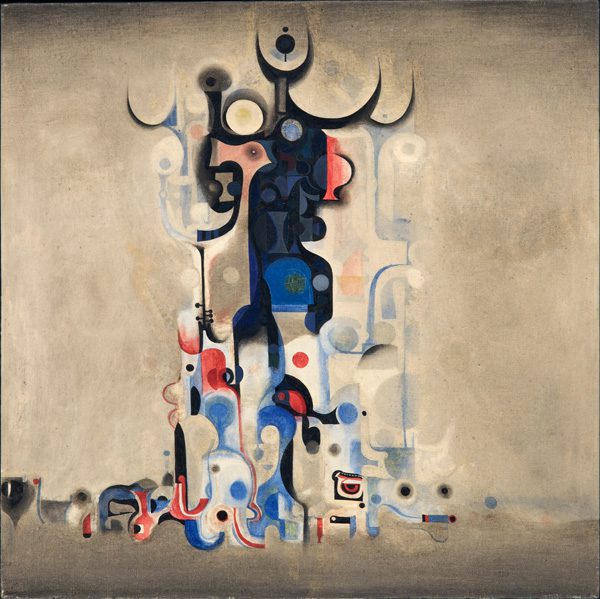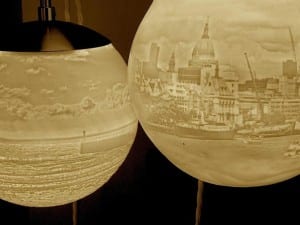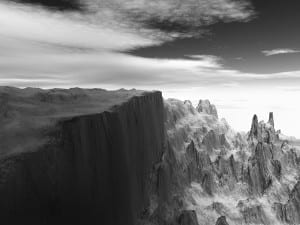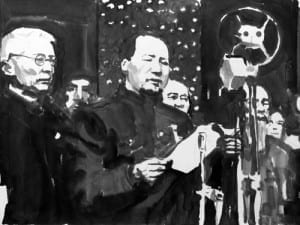Given that this year Ramadan is celebrated from 9 July to 7 August all throughout the world by Muslim communities, given the recent protests in Egypt and Turkey, given that in Muslim countries peace always seems to position itself on the back of a double-edged knife; the recent move by the Tate Modern to introduce well-established Muslim artists to British and European art enthusiasts is perfectly timed. Art is more about politics than it was ever before particularly in predominantly Muslim countries.
European art lovers have only recently been introduced to the works of artists such as El-Salahi and Choucair, but they have been around for many years. There are others who came before them, from different denominations of Islam (Sunni, Shia, Sufism, Ibadi, Ahmaddiya, Quranism, Nation of Islam and Liberalist movements within Islam) who created a vast oasis of Islamic art since the 7th century. Yet European art lovers do not really seem to understand the content of Islam as a religion. Individuals are often ill-informed about what Islam constitutes and this causes fragmentation not just between Muslims themselves but also with those of other faiths. The best way to perhaps explain El-Salahi’s art is to say that it aims to deconstruct such invisible walls. The one hundred paintings displayed within the exhibition all attest to this intention.
However, without being around and seeing the day-to-day lifestyles of Muslim communities from different cultural backgrounds it is difficult to decipher Islamic art, let alone Sudanese Sufi artist Ibrahim El-Salahi’s modernist work from the last 50 years that captures elements of Sudanese culture as if plucking beams of light streaming from a refracted lens. However, if we consider what has changed in the Arabian Peninsula, North Africa and in the Middle East over the last 50 years we see the same struggles, the same difficulties, and the same restrictions. El-Salahi’s art combines the problems and possible solutions in a modernist yet spiritual genre even though his style and tone have changed dramatically throughout his career.
Born in Omdurman, Sudan in 1930 El-Salahi learned to read and write in his father’s Khalwa (a Qur’anic school). In any Qur’anic school, children learn to write by transcribing sections of the Qur’an in calligraphic script; an art form in itself and one which El-Salahi later implemented into his work. From 1949 to 1952 El-Salahi studied painting at the School of Design in Khartoum and he was awarded a government scholarship to study painting and calligraphy at the Slade School of Fine Art in London. At the retrospective exhibition currently on display at the Tate Modern we see two examples of El-Salahi’s work from the time he was applying to study at Slade: Portrait of a Young Man (1950-54) and Portrait of a Woman from Egypt (1950-54), both oil on canvas. These paintings reflect Western values and ideals in art. It is incredible to see the transformation in El-Salahi’s art from these two heavily Western-influenced paintings to his recent works with their vaguely Escheresque qualities and compositions of futuristic black and white images that exhibit linear forms offering a strange sense of depth; ink on paper triptych The Day of Judgment (2008-2009) and Flamenco Dancers (2012).
As I meander from wall to wall and room to room, I notice that this tradition and influence of Islamic calligraphy is so evident in so many Muslim artists from different cultures, nationalities, and times. The work of Turkish artist Erol Akyavaş is a prominent thought and I wouldn’t be surprised if the Tate Modern was to have an Akyavaş retrospective one day. The Last Sound (1964) is a breath-taking tribute to El-Salahi’s, father and refers to the Islamic prayers recited for the dying and deceased. Full of imagery, it depicts the way that sounds split as they hit the soul of a dying person.
The light side of life mingles with the sinister in El-Salahi’s paintings. He seems to work from a place of deep conscience and intuition. As it happens, every talented and innovative artist living in a country ruled by a dictator is sent to prison for one reason or another. This was also the case for El-Salahi; six months and eight days. Prison life seems to always magnify the spirituality in artists and writers. Perhaps it is a sort of re-birth and realising one’s true desires in life amidst the yearning for freedom. After being released from prison, El-Salahi left Sudan to live in Doha, Qatar. The Prison Notebook that El-Salahi produced shortly afterwards signals a healing effect for the artist’s latter work. Living in Oxford since 1998, his work has not only proved to be truly visionary but also truly unique due to his tough life experience and artistic intuition. And it is in his work that we see the merciful and misunderstood religion of Islam through the eyes of a God of oneness and peace, contrary to common European belief.
Ibrahim El-Salahi: A Visionary Modernist will be on display at the Tate Modern until 22 September 2013.
Hande Eagle
Credits
1.Vision of the Tomb 1965 (Download high resolution image 1.43 MB)Oil on canvas Museum for African Art, New York © Ibrahim El-Salahi.
2. The Tree 2003 (Download high resolution image 1.8 MB) Private Collection © Ibrahim El-Salahi.





